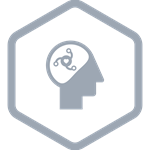Dawn of Digital Member Experience
Executive Briefing: Association leaders hold the primary responsibility for producing the experience members value from their organizations.
More than ever, that experience is now delivered via digital channels, and those digital channels are expanding. Members, donors, customers, media and stakeholders engage with organizations via the desktop web, the mobile web, native iOS and Android mobile applications, email and multiple social channels.
We are in the era of digital member experience. In associations, we compete for our members’ attentions, just like our counterparts in the for-profit world, and attention is scarce. We need to meet our members where they are and serve their needs in an integrated experience that ties together content with actions, values and desires.
Software vendors often sell products with the promise of magically meeting all aspects of an association’s digital strategy in one big package of software. However, the reality is far more complex. Digital member experience emerges from many more sources than a single software and involves contributions from stakeholders across multiple parts of an association's leadership.
This executive briefing reveals the contributing factors that enable digital member experience across an association. First, let’s start with a definition of key terms.
Multichannel

Digital experiences are mediated by content and interactions across many devices and publishing media. Each of the different pathways members take when experiencing an association can be considered a “channel.” When we talk about multichannel, we talk about reaching members on multiple versions of the following:
- Devices types
- Screen sizes
- Technical platforms
- Formats
- Media
Integrated

Digital member experience often involves interactions that touch multiple databases — for example, the Association Management System (AMS), other Customer Relationship Management (CRM) systems, operational and ERP systems and marketing platforms. In order to create a smooth digital experience, all of these parts must work well together and employ communication using common language and definitions for members and activities.
The data and the system rules must all work together without breaking or causing redundant and siloed data. This creates a comprehensive view of a given member and their relationship and interactions with the organization. Integration refers to the art of getting all these pieces to work together towards one common goal, a beautiful digital member experience.
Digital Experience

Every time a member interacts with our association via any digital channel, they add a series of impressions and memories to their minds that, when added together, form that member’s digital experience of our association. As association leaders, we’re responsible for creating and managing that experience.
Digital experiences are available everywhere and anytime, which means our associations are always on and generating impressions, educating and recruiting members and facilitating member interactions. This empowers our associations, yet also adds vulnerability at the same time.
Personalized / Contextual

A member’s experience with our association hinges on how well the content aligns with their needs, hopes, dreams and fears. The more alignment, the more loyalty and engagement. There are two kinds of personalization:
Explicit Personalization
With explicit personalization, the visitor profile or shared user information determines what content a user will see. A member entering her age, gender, location, interests, etc. is an example of explicit personalization.
Implicit Personalization
Unlike explicit, implicit personalization does not require a member to log in, but relies on what that member is telling us about themselves exclusively by their behavior.
With implicit personalization, systems monitor and respond to what is happening with our members within their digital sessions, including their clicks, touches, submissions, posts, requests and purchases. Implicit personalization responds to monitored and tracked user behavior and presents content with the goal of delivering the most useful content to the user based on known, as well as immediate, behaviors. Next, let’s look at the six major components of digital experience:
- Purpose
- Process
- People
- Platform
- Strategy
- Timing
Purpose

As association leaders, we are strongly aligned with our organization’s purpose, and we strive to align employees and members with our purpose. Of course, with digital member experience, purpose must be at the heart of our approach. Purpose drives the substance, underpinning digital experiences and our decisions about the platforms that support them.
We must define our purpose and the ways our digital experience will support that purpose for each of our major user groups, member types or personas.
Questions that help to frame purpose relative to digital experience include:
- Who are our major member groups, stakeholder groups and other types of users, and how do they interact with our association?
- How do we educate and inform each of these personas?
- How do we enroll, engage and elicit contributions from our members?
- What are our organizational challenges, and how can our members and stakeholders be a part of the solution?
- What visions, goals and metrics are we aiming to achieve within the next 5 years, and how can each of our personas participate in accomplishing them?
- What content and which experiences make our organization most valuable to its members? How does that drive towards our association’s purpose?
Process and People

Digital member experience only reflects the realities of an organization’s internal operating health and maturity. Association leaders must strive to build organizations that are digitally responsive and equipped with the people and processes to support an era of rapid transformation.
By creating well-formed organizations in tune with delivering integrated digital experiences, membership naturally expands. An organization’s purpose gets accomplished daily, ad revenue growth reflects the growth of an organization in tune with the times and in touch with the future.
Digital Project Management Infrastructure

First and foremost, associations need a digital project management infrastructure that works across an entire organization, not just one department. When digital project management is owned only by IT or by marketing, many other parts of the organization often remain frustrated with their abilities to accomplish their visions, goals and metrics, because all digital goes through one bottleneck. Projects are often stopped at checkpoints far beyond their control. Process bottlenecks, wherever they occur, often result in one of three outcomes:
- Workflows stop or face endless delay, building frustration and apathy.
- Proactive and empowered collaborators move to discard the workflow completely and build separate siloed systems or accomplish their objectives with external vendors.
- The workflow and organizational structure necessarily change to adapt to healthier and more effective collaborative digital processes.
Too often, organizations get stuck in scenarios 1 and 2, leading to a proliferation of silos and redundant data sets that ultimately reflect in poor member experiences.
The key is a cross-functional, integrated digital management group informed by a digital steering group with stakeholders from around the organization. [A] calls this a Digital Management Office (DMO), which functions much like an enterprise-wide Project Management Office (PMO), but with a different set of operating principles and development operations (DevOps) infrastructure.
Content Strategy and Content Engineering Practices
Next, an organization needs to build content strategy and content engineering practices into the association, thereby enabling a smooth-running collaboration between strategy, content assets and technical assets and engineering. The content strategy and content engineering practices should be integral to an organization’s delivery of digital member experiences.
Skills Development
In order to create digital member experiences, our teams must be able to deliver digital with excellence in a rapidly-changing technical environment. By investing in constant training and career development of our staff, in an intentional way, we can enhance digital maturity throughout the organization. We can start with an assessment of our team’s current skills and where the market is headed.
Evaluating skills such as content strategy, content engineering, multichannel marketing, analytics and digital user experience can help us to benchmark where we need to add knowledge, experience and training into our organization. Cross-training skills helps make sure our teams can communicate well with each other.
Platform

Without the right platform, it's impossible to deliver the experiences our members truly want and to reach them anywhere and everywhere. We need nimble and flexible platforms that do more than simply manage content, but manage member experiences and engagement as well. It's important to get the platform right to help manage member experiences across each one of our member's journeys with our association.
Member Engagement Journey

Growing from content management to customer or member management isn't simply a technology project, however. We need an organizational change initiative dedicated to creating a digital strategy, tools and processes to deliver complete funnel CEM and superior digital experiences to our members.

Strategy

Associations without a clear digital strategy fall victim to anxious boards, confused staff and an unruly mess of tools and vendors trying to keep up with change. Even agile organizations need to define their strategic outcomes or they'll get exactly where they planned to go: nowhere. If we don't create a digital plan now, we're going to lose position to those who are willing to map the future.
Strategy is not hard. It just takes attention. The first step is to outline what we want our future state to look like compared to our current state. For instance, what do we want our member experience to look like in 2020? By failing to define the landscape now, we run the risk of leaving our members by the wayside to be enthralled and captured by other channels and organizations actively working to capture their attention.
Digital strategy gives association directors an opportunity to align the board and the internal organization around a common plan for addressing fundamental change. Boards who don't have a clear vision start to impose their own vision into the vacuum, leaving executive directors and other key staff scrambling. A clear written vision keeps everyone focused and prioritizes time and investment.
Timing

The time to address digital change will never be more right, because no matter what our constraints, our associations and members exist in a digital world now.
Running out the clock on old technology because we don't have the stomach for the re-platform will ultimately put us further behind. Are we willing to wait for our platforms, processes, people and strategies to break before we work on them?
About [A]
[A] is a content technology integrator with proven experience delivering operational cost savings, faster time to market and revenue generation. National association clients include sporting bodies, advocacy groups, trade groups, accrediting bodies representing millions of members. We are dedicated to demonstrating how digital marketing and the related technologies can improve the bottom line — an important step to gaining the support of executives and board members.
For a personal introduction to digital association maturity, setup a consultation with [A].